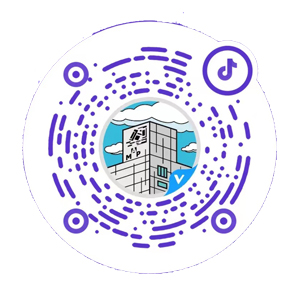
 Press Center
Press Center
The Fundació Joan Miró presents Joan Miró. Women, Birds, Stars a major exhibition of Miró’s work at the Museum of Art Pudong in Shanghai.
The Museum of Art Pudong, in Shanghai, aims to establish itself as an international cultural landmark for Shanghai and an important platform for global cultural and art communication, in the new building designed by Ateliers Jean Nouvel (AJN), will focus its inaugural exhibition on Joan Miró, one of the leading artists of the twentieth century.
The exhibition, organised by the Fundació Joan Miró in collaboration with the Museum of Art Pudong, is the first show offered by the Fundació Joan Miró in China and the most important to be held on the artist’s work in Asia since 2014. It will be open to the public from 8 July to 7 November 2021.
Curated by Jordi Joan Clavero, Head of Public Programming and Education at the Fundació Joan Miró, the exhibition Joan Miró. Women, Birds, Stars includes sixty-nine paintings, sculptures, drawings and prints by the artist belonging to the foundation’s permanent collection and two private collections, plus a series of photographs by Joaquim Gomis, video material, and a public and educational program specially designed for this project.
In the works on display, visitors will discover Miró’s imagination and his unique language of signs, as well as the way the artist experimented with a variety of techniques and materials and the new life he gave to everyday objects.
The depth of meaning in Joan Miró’s work springs from a desire to capture the essence of human existence. On a personal level, this desire also implied an affirmation of identity that arose from Miró’s strong connection with the land – with the medieval town of Mont-roig del Camp, in the Catalan countryside, where his family had a house and which was the original source of his creativity. Paradoxically, he could only achieve this aim by breaking boundaries and constantly reconsidering his own creative effort, which he was finally able to materialise in the context of the Paris avant-garde and in a century marked by cruel conflicts. The artist’s wish thus acquired a dimension that moved beyond the realm of the individual to become universal. Miró aspired to achieve a collective, anonymous form of art, and this explains the multidisciplinary nature of his work and his quest for collaborations. Through painting, he created a complete universe of signs and symbols. Inspired by Zen spirituality and Far Eastern art, Miró had a powerful influence on subsequent generations of artists such as the American abstract expressionists, among many others; his art has become, rather than a movement, a language that continues to be alive and appeal to all audiences today.
As the years passed, Miró defined his own style, systematically reduced his colours to an elementary range, and consolidated a formal vocabulary composed of a clearly defined group of figures, women, birds, the moon, the sun and the constellations, the ladder of escape, and motifs that refer to more general concepts – the land and the sky, the connection between them, and the search for an ideal harmony.
To celebrate the opening of the new building for the Museum of Art Pudong in Shanghai, the Fundació Joan Miró presents the project Joan Miró. Women, Birds, Stars. The title of the exhibition refers to a theme that Joan Miró addressed over some forty years of his career, reaching its zenith in his later works. This period of maturity was probably the time the artist enjoyed the most, for several reasons. Having overcome his financial difficulties, as well as the uncertainties of the Spanish Civil War – when he lived in exile in Paris – and the Second World War – when he first moved to the coast of Normandy and then to Palma de Mallorca – he settled permanently on the island in 1956. There he finally had access to a spacious studio designed by his friend Josep Lluís Sert, the architect who created the Fundació Joan Miró building twenty years later together with the artist. That studio allowed Miró to work on large-format pieces and diversify his output by experimenting with sculpture, printmaking and textiles.
Joan Miró. Women, Birds, Stars offers an insight into Miró’s language at the Museum of Art Pudong in Shanghai. The Fundació Joan Miró has selected thirty-one paintings, ten drawings, twelve lithographs, seven engravings and nine sculptures, most of them from its permanent collection. The show is divided into an introduction and four sections. In the first part, A Vocabulary of Signs introduces visitors to the artist’s vocabulary through his prints, and shows the more poetic concepts developed by Miró throughout his artistic career: the sky, the stars, birds and women.
In the 1950s, in the new studio designed by Josep Lluís Sert, Miró was able to delve fully into new materials and formats. The section The Sign In Freedom shows the artist’s technical experimentation with a variety of materials, and his use of signs in a more open way, enabling them to transform and reinvent themselves, even to the point of dematerialising.
The third section, The Object, focuses on sculpture, ceramics and textiles as objects. For Miró, objects are the equivalent of signs in painting, where the real becomes symbolic. Their presence and practical reality remain evident, but the way Miró uses and combines objects is translated into a new personality and form that go beyond their practical function: ‘A piece of thread can unleash a world’, Miró told the artist Yvon Taillandier in 1959. The last section, Black Figures, includes paintings, etchings and lithographs. One of Miró’s distinguishing features was his constant curiosity, which led him to experiment with a wide variety of materials and techniques such as drawing, painting and printmaking.
In addition to the works by Joan Miró, the exhibition includes photographs by Joaquim Gomis, a friend of Miró and the first president of the Fundació’s Board of Trustees. In these images, we see the artist in the print shop, at the foundry, and in his own studio. The Joaquim Gomis collection, managed by the Fundació, gives us context and a better understanding of Miró’s creative processes. Video material and a guide book for kids and families, specially designed for this project, complete a unique experience of the Fundació Joan Miró at the new Museum of Art Pudong, in Shanghai.
Joan Miró
A man rooted in his land, an artist of international reach
Barcelona, Spain, 1893 – Palma, Spain, 1983
Joan Miró was born in Barcelona in 1893, but the emotional landscapes that shaped him as a person and an artist were principally those of Mont-roig, Paris, and Majorca, and later those of New York and Japan. The small town of Mont-roig in the Baix Camp region of Catalonia was a counterpoint to the intellectual ferment of his life with the surrealist poets in 1920s Paris, and to the stimulus of discovering Abstract Expressionism in New York in the forties. Some time later, in the midst of World War II, Joan Miró returned from exile in France and settled in Palma de Mallorca, which became his refuge and workplace and where his friend Josep Lluís Sert designed the studio of his dreams.
Miró’s attachment to the landscape of Mont-roig first and then Majorca was crucial in his work. His connection to the land and his interest in everyday objects and in the natural environment formed the backdrop to some of his technical and formal research. Miró avoided academicism in his constant quest for a pure, global art that could not be classified under any specific movement. Self-contained in his manners and public expressions, it is through art that Joan Miró showed his rebelliousness and a strong sensitivity to the political and social events around him. These conflicting forces led him to create a unique and extremely personal language that makes him one of the most influential artists of the 20th century.
For further Information and images, please contact: luyang@museumofartpudong.org.cn
NOTES EDITORS
About Museum of Art Pudong
Museum of Art Pudong (MAP) is located in Lujiazui Central Business District in Shanghai and has been designed by Ateliers Jean Nouvel (AJN).
MAP aims to establish itself as an international cultural landmark for Shanghai and an important platform for global cultural and art communication. MAP will primarily focus on the presentation and exchange of international arts, supplemented by domestic art exhibitions. It hopes to become a destination of choice for artists and visitors from around the world, providing a platform for the presentation of world class art.
MAP intends to complement the existing art museum community in Shanghai. It will enhance Pudong New Area through the creation of fresh opportunities for public access to culture. The establishment of MAP also builds upon Shanghai’s, and especially Pudong New Area's, historical traditions and recent successes.
About The Fundació Joan Miró, Barcelona
The Fundació Joan Miró, Miró Art Museum, located in Barcelona, is a centre for the study and dissemination of Joan Miró’s work and contemporary art. Created by Miró himself, at first primarily with works from his own private collection, with a desire to set up an internationally recognised centre in Barcelona for the artist, Fundació Joan Miró offers an overview of the landscapes of Joan Miró’s art and life, creating an enriching dialogue with other artists from the twentieth and twenty-first centuries. Using an interdisciplinary approach, it organises temporary exhibitions as well as academic activities and projects in collaboration with other institutions and organisations. Through its exhibition and educational programs, it explores lines of research linked to Miró’s work and to contemporary art. It is located in a building designed by Josep Lluís Sert, making it one of the few museums anywhere in the world in which the affinities between an artist and an architect underpin the dialogue between the works and the space that houses them.
Ever since the Fundació Joan Miró opened its doors in 1975, one of its priorities has been to share the work and legacy of Joan Miró with the world. For over thirty years, the foundation, with the support of public and private organisations, has promoted and developed international projects meant to further advance knowledge of the Fundació Joan Miró and deepen its relationships with other museums and art institutions through the conception, development and management of travelling exhibitions created on the basis of its collections.
 PREV
PREV

 沪公网安备 31011502017932号
沪公网安备 31011502017932号



